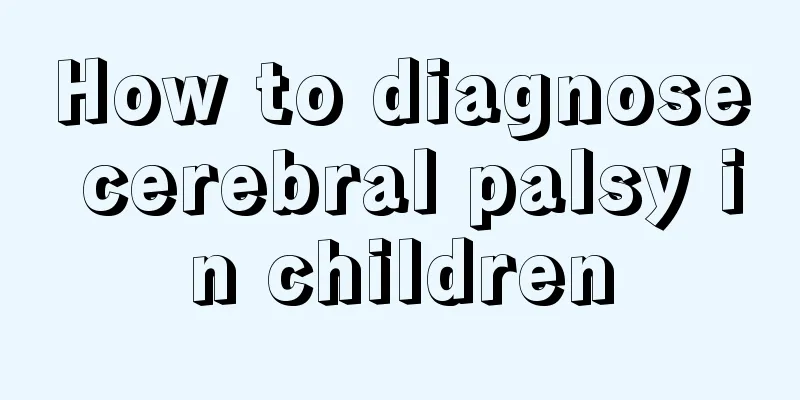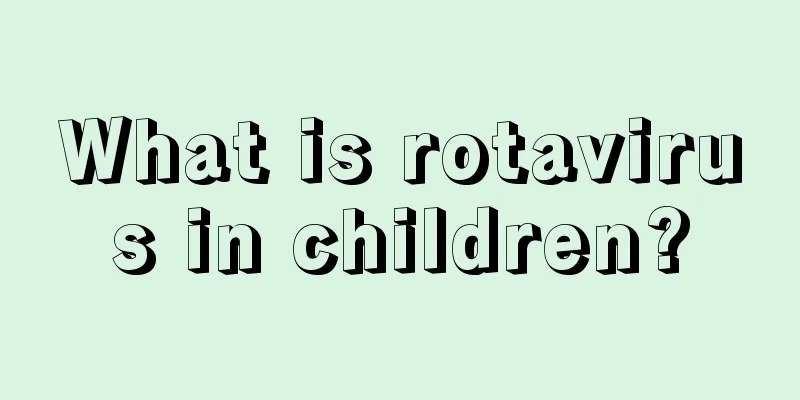How to diagnose cerebral palsy in children

|
Cerebral palsy in children can actually be so serious that it affects the normal development of children. In addition to some genetic factors, some problems in life can also easily lead to this phenomenon. However, this will indeed seriously affect the healthy growth of the fetus. If it cannot be treated thoroughly, it will also have an adverse effect on his future health. Let's learn how to diagnose cerebral palsy in children. Of course, parents hope that their children can grow up healthily, but many times some diseases will always threaten the health of children. Therefore, we should pay more attention to the health care of children in life, and we must promptly examine and treat any abnormalities. Differentiate from central paralysis caused by progressive diseases and transient motor development disorders in normal children. 1. Simple hereditary spastic paraplegia has a family history, starts in childhood, and progresses slowly, manifested by increased muscle tone in both lower limbs, hyperreflexia of the tendons, pathological signs (), and possibly cavus foot deformity. 2. Complex hereditary spastic paraplegia is an autosomal recessive genetic disease with rapid progression. It may present with the above-mentioned pyramidal tract signs of both lower limbs, optic atrophy, sphincter dysfunction, etc., such as Behr syndrome. 3. Ataxia-telangiectasia Also known as Louis-Barr syndrome, it is an autosomal recessive disease with a progressive course. In addition to ataxia and extrapyramidal symptoms, it may also have characteristic manifestations such as conjunctival capillary dilation and significantly increased alpha-fetoprotein. Impaired immune function is often complicated by bronchitis and pneumonia. 4. Intracranial space-occupying lesions Symptoms of increased intracranial pressure such as headache, vomiting and optic disc edema may have localizing signs, which can be identified by CT/MRI; sequelae of encephalitis include a history of encephalitis, intellectual impairment, irritability, excitement, restlessness and epileptic seizures. 5. Infants with muscular dystrophy and glycogen storage disease may have progressive muscular atrophy and muscle weakness. Progressive muscular atrophy accompanied by hypertrophy of the tongue, enlargement of the liver, spleen and heart should be considered as glycogen storage disease. The above is an introduction to the diagnosis of cerebral palsy in children. If you want to know and understand this problem more clearly and comprehensively, it is recommended that parents pay more attention to their children’s growth and changes in daily life. Only by paying attention to these will you find out whether your child will have different performance from ordinary people. |
<<: What to do if deciduous teeth are retained
Recommend
Child car safety seat
There are many items in life that are not common ...
What causes children not to eat?
If the baby does not eat, it will be detrimental ...
How to relieve itching in children with allergies?
Children are very prone to allergies, which is cl...
Is it normal for a two month old baby to have a temperature of 373?
We all know that the normal body temperature of a...
What causes white tongue in children?
Everyone is very concerned about children’s disea...
Acne on the child's head
If you find that your child has acne on his/her h...
Symptoms of a fever
Fever is not only caused by some colds, it may be...
Causes of swollen lymph nodes in babies
The lymph nodes are located in our neck, which is...
What is the reason why children have dark skin?
Children's skin is generally white and tender...
What are the symptoms of encephalitis in children? The doctor replied!
If infants and young children suffer from encepha...
Treatment for one-year-old baby vomiting in the middle of the night
In our lives, it is common for one-year-old babie...
Treatment of white mouth in newborns
The whiteness of the mouth of newborns has attrac...
What to do if children have low growth hormone?
Many parents find that their children are not onl...
This emergency treatment will not leave scars on children after burns
Because people wear very thick clothes in winter,...
What should a three-year-old child eat when he gets angry?
Three-year-old children almost don’t drink milk p...









